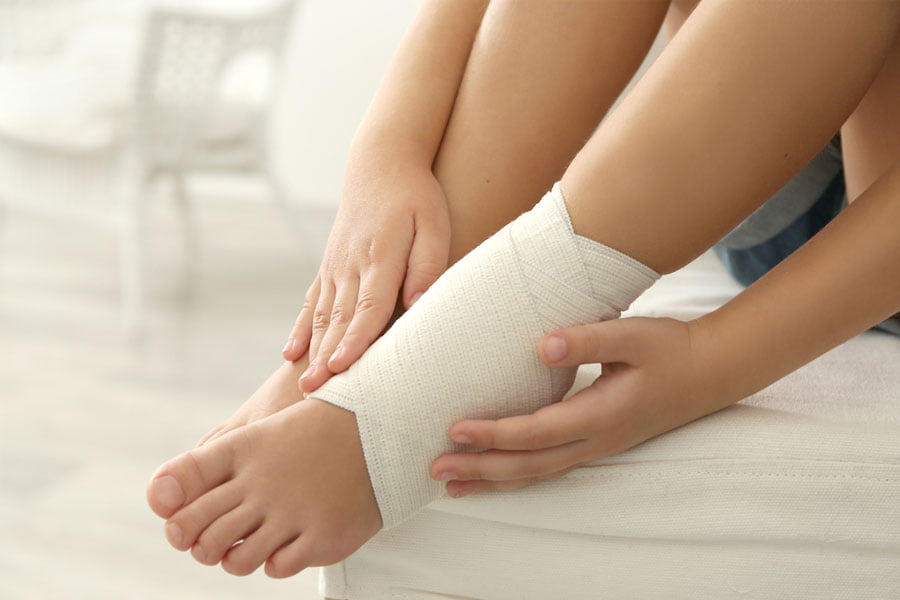An ankle sprain is a common injury that can be caused by any number of activities. A sprain happens when the ligaments connecting your ankle bones are stretched beyond their limit, leading to pain and swelling. Anything can cause one, from running, jumping, or even something as simple as losing your footing when going down the stairs or getting out of the shower.
When asking how long does a sprain take to heal, you’ll find that the average recovery time is around two weeks but that’s only when the proper care is given to the injury. Thankfully, by following these steps, your ankle will be healed and back to normal before you know it.
Focus On Rest
Easy enough, right? That’ll all depend on what your normal day looks like. As much as you can, get off your feet and keep the injured ankle elevated. Doing so is the most important step in helping it heal. Don’t rush on getting back to normal, but avoid putting any weight on it for a prolonged amount of time and take it easy when you do have to get from one place to another.
As you are keeping it elevated, apply ice to your ankle. This is a great way to reduce swelling and make the injury heal even faster. It’ll be hard to tolerate the cold for hours on end, so what you’ll want to do is apply the ice pack to your ankle for 20 minutes at a time. To make it more tolerable, wrap the ice pack in a towel but you’ll still need to be able to feel the cold for it to make a difference.
How To Move Safely
You’ll need to get as much rest as possible but life can’t always completely stop. When you still need to get your normal things done, compression can help reduce swelling all while providing support to the injured ligaments as you move around. There are a few different ways to do this, such as an elastic bandage or an ankle brace to apply compression while preventing any extra movement or bending.
As you start to move around again, wearing the proper footwear is crucial in getting back to normal. If you are in a position to purchase shoes to help aid your recovery, look for a pair that offer good arch support and proper cushioning to help in keeping your ankle safe. Also, as you start to move around again, it’s important to be extremely mindful when walking on uneven surfaces or difficult terrain.
Gentle Exercise
Be slow and steady with this one, with the key focus being on “gentle.” As you feel like both the pain and swelling both starts to go down, adding small, easy exercises into your routine can help in strengthening your ankle and getting it ready for the weight it was once used to handling.
The slightest bit of pain is a direct sign that you aren’t yet ready for what you are attempting. If it feels fine, start out with gentle stretches and take it from there. As leaning your sprained ankle’s limit, focus on the range of motion exercises and balance above all else.





